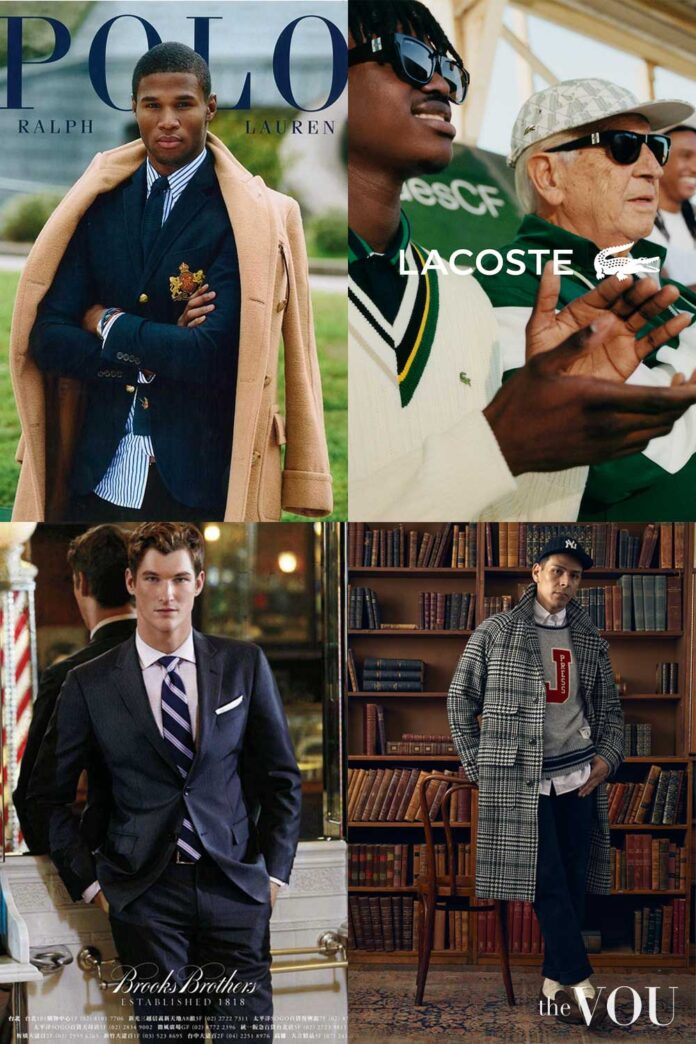Branded Clothing Essentials: Understanding the Fabric Behind the Fashion
Branded Clothing Essentials: Understanding the Fabric Behind the Fashion
Blog Article
The Significance of Sustainable Clothes: How It Affects the Setting and Your Storage room
Sustainable garments is increasingly recognized for its important function in reducing the ecological effect of the quick apparel industry. By concentrating on eco-friendly materials and honest production techniques, it addresses pushing eco-friendly concerns. This change not only benefits the planet however also influences consumer selections, causing a more thoughtful method to wardrobe management. Comprehending these characteristics increases crucial inquiries regarding style's future and personal responsibility in shaping it.
The Ecological Footprint of Rapid Fashion

Benefits of Lasting Materials
Sustainable materials use substantial benefits, especially through environmentally friendly fabric choices that decrease ecological harm. These products additionally demonstrate resilience and durability, minimizing the need for frequent replacements. Because of this, they add to an extra sustainable garment industry and promote accountable customer habits.
Eco-Friendly Textile Selections
While the style market has long been associated with fast patterns and ecological harm, the surge of eco-friendly fabric choices provides a transformative opportunity. Sustainable materials such as organic cotton, hemp, and Tencel have obtained appeal because of their lower eco-friendly effect. These textiles are commonly generated without unsafe pesticides and require less water, minimizing their carbon impact - Branded Clothing. Additionally, lots of environmentally friendly textiles are biodegradable, adding to a circular economic climate by decreasing waste. Picking sustainable materials not just supports eco liable techniques however additionally promotes much healthier ecosystems. As consumers become a lot more aware of their buying power, the need for environment-friendly materials motivates brands to introduce and take on even more lasting manufacturing methods, ultimately benefiting the earth and future generations
Resilience and Longevity Benefits
Several customers are significantly identifying the resilience and long life benefits of lasting products in their clothing choices. Unlike standard materials, sustainable materials such as organic cotton, hemp, and recycled polyester are engineered to stand up to deterioration, causing garments that last longer. This lowered regularity of substitute not just saves consumers money with time but also lessens waste produced by rapid fashion. In addition, sustainable clothing commonly uses green production techniques that improve fabric strength, adding to a decrease in the general carbon footprint. By purchasing sturdy clothes, customers can cultivate a more sustainable wardrobe while enjoying top quality pieces that maintain their aesthetic and capability gradually. Longevity and longevity stand as crucial advantages of choosing sustainable materials.
Lowering Waste Through Sustainable Practices
Minimizing waste in the style industry can be achieved with innovative techniques such as upcycling and repurposing products. Additionally, embracing minimal closet strategies motivates consumers to prioritize top quality over quantity, eventually decreasing garments consumption. With each other, these methods add significantly to a much more lasting garments version.
Upcycling and Repurposing Materials
Upcycling and repurposing products have actually emerged as cutting-edge approaches in the fashion market, transforming thrown out fabrics right into useful new products. This method not only lessens waste yet additionally encourages creativity and individuality in apparel style. By taking old garments and products, developers can create unique items that show individual style while minimizing the need for new resources. Additionally, upcycling commonly requires less power and water compared to conventional production processes, substantially lowering the environmental footprint of style. As consumers become more aware of sustainability, the appeal of upcycled clothing continues to climb, advertising a round economy. Eventually, these methods add to an extra lasting future, where style prioritizes environmental health and wellness over fast production and intake.

Minimalist Closet Strategies
As individuals increasingly look for to minimize their environmental impact, adopting minimal wardrobe methods has actually obtained grip as an efficient approach to sustainable style. These approaches highlight high quality over amount, encouraging customers to curate a smaller sized collection of flexible, long lasting clothing. By concentrating on timeless items that can be combined and matched, individuals can lower the frequency of purchases and inevitably lower waste.Additionally, minimalism advertises mindful consumption, urging shoppers to assess the environmental and moral implications of their selections. This approach not only promotes a much more lasting lifestyle yet also simplifies everyday decision-making regarding outfit. As individuals accept minimalist concepts, they add to a style culture that values sustainability and responsible consumerism, eventually resulting in an extra eco-conscious culture.
The Role of Honest Labor in Lasting Fashion
While lots of consumers are progressively familiar with the environmental consequences of their garments selections, the importance of ethical labor methods in sustainable style can not be ignored. Ethical labor encompasses reasonable salaries, risk-free working conditions, and respect for employees' civil liberties, creating the backbone of liable style manufacturing. Brand names that focus on honest labor not just uplift neighborhoods but also established a standard for liability in the industry.Moreover, the assimilation of honest methods cultivates openness, making it possible for consumers to make informed selections regarding their purchases. This method contrasts dramatically with quick fashion's exploitative labor models, which often prioritize revenue over individuals. By sustaining business committed to moral labor, customers add to a system that values human self-respect alongside ecological sustainability. Subsequently, ethical labor is not More about the author just an add-on; it is important to the more comprehensive objective of sustainable style, making sure that the mission for eco-friendliness does not come at the expenditure of civils rights.
The Impact of Sustainable Garments on Carbon Emissions
Lasting apparel has the potential to substantially reduce carbon emissions connected with the style market. Conventional garment production adds significantly to greenhouse gas exhausts, primarily because of energy-intensive manufacturing processes and the usage of non-renewable resources. In contrast, sustainable fashion concentrates on environmentally friendly materials, such as natural cotton or recycled fibers, which frequently need less energy to produce.Moreover, lasting brands have a tendency to embrace much more efficient manufacturing techniques, minimizing waste and decreasing overall emissions. By focusing on longevity and timeless layout, lasting garments encourages consumers to acquire less often, additional reducing the carbon impact associated with overconsumption.Additionally, several sustainable brands are devoted to transparency in their supply chains, enabling customers to make enlightened options that align with their worths. Eventually, shifting in the direction of sustainable clothes can cause a substantial reduction in carbon exhausts, adding to a much healthier world and a more lasting future for the apparel industry.
Sustaining Regional Economic Climates With Lasting Options
The shift towards sustainable clothing not just addresses environmental problems however additionally substantially benefits regional economies. By picking sustainable style, consumers usually support neighborhood artisans and little organizations, enhancing neighborhood strength. These enterprises normally run on a smaller scale, focusing on workmanship and ethical methods over mass production.Investing in locally made sustainable garments cultivates job development and promotes financial growth within communities. As customers become extra knowledgeable about the ecological influence of their purchases, they progressively look for out items that mirror their values. This need encourages neighborhood suppliers to embrace sustainable techniques, adding to a round economy.Moreover, sustaining regional services decreases transportation exhausts, straightening with eco-conscious customer habits. The interconnectedness of lasting apparel and neighborhood economic climates underscores the important duty that specific options play in advertising both ecological and financial health and wellness. By fostering these local links, areas can prosper while likewise working in the this page direction of a much more lasting future.
Transforming Your Closet: Tips for a Lasting Closet
As individuals look for to minimize their environmental impact, changing a storage room into a sustainable closet comes to be an essential action. One efficient technique is to evaluate existing apparel, maintaining only things that are used routinely and that straighten with sustainability goals. Focusing on high quality over quantity is crucial; purchasing durable items from environment-friendly brand names can greatly lower waste.Additionally, integrating used products can rejuvenate a closet while minimizing ecological damage. Organizing apparel swaps with good friends or donating extra items can better promote sustainability.When purchasing, people must look for materials that are natural, recycled, or biodegradable, and stay clear of fast fashion stores - Branded Clothing. Exercising conscious intake by thoughtfully thinking about each acquisition can contribute to a much more lasting lifestyle. By applying these ideas, one can produce a closet that reflects individual design while supporting ecological stewardship
Regularly Asked Inquiries
Exactly How Can I Determine Sustainable Garments Brands?
To recognize lasting garments brand names, one ought to look into products utilized, inspect for accreditations like Fair Trade, and analyze the brand name's transparency regarding their production procedures, labor techniques, and ecological influence, guaranteeing honest and green techniques are focused on.
What Are the Expenses Associated With Sustainable Fashion?
The expenses associated with sustainable style can differ substantially. Greater production expenses, ethical sourcing, and green products often bring about raised retail costs, which may deter some customers while attracting ecologically aware customers.
Can Sustainable Clothing Be Fashionable and Fashionable?
Lasting clothes can indeed be trendy and trendy. Developers progressively prioritize innovative products and ethical production approaches, showing that style and sustainability can exist together. Consumers currently have diverse alternatives that blend looks with environmental consciousness.
How Does Laundering Clothing Affect Their Sustainability?
Cleaning clothing substantially influences sustainability by consuming water and energy, adding to air pollution, and causing microplastic launch. Regular cleaning can break down fabrics, shortening their life expectancy and enhancing the requirement for substitutes, see page inevitably worsening environmental concerns.
What Is the Lifespan of Lasting Apparel Contrasted to Quick Style?
The lifespan of sustainable clothing generally goes beyond that of quick fashion products, commonly long lasting a number of years as a result of top quality materials and craftsmanship. In contrast, rapid fashion garments might deteriorate swiftly, necessitating more regular substitutes. Lasting clothes is significantly recognized for its crucial duty in decreasing the environmental impact of the fast style sector. While lots of consumers are increasingly aware of the ecological repercussions of their garments options, the relevance of honest labor methods in sustainable fashion can not be forgotten. Branded Clothing. Lasting garments has the possible to substantially decrease carbon discharges associated with the style sector. In contrast, lasting fashion focuses on eco-friendly products, such as natural cotton or recycled fibers, which commonly need less power to produce.Moreover, lasting brands often tend to take on extra effective manufacturing practices, reducing waste and reducing general emissions. By focusing on toughness and ageless style, sustainable clothing urges consumers to buy much less frequently, additional decreasing the carbon impact connected with overconsumption.Additionally, numerous lasting brands are devoted to transparency in their supply chains, allowing consumers to make educated choices that straighten with their values
Report this page